
In many ways, the Punjabi-Sikh art scene is expanding exponentially these days. Just 10 years ago, beyond major, mainstream singers, I don’t think there was an arts scene, except maybe in people’s homes. Today, there are film festivals in most major cities like Spinning Wheel and the upcoming Sikh Heritage Film Fest in NY, art exhibits in museums such as the recent exhibit at NY’s Rubin Museum and current exhibit at the London’s Victoria and Albert, and even spoken word shows like When Lions Roar and Lahir. There are independent artists writing thoughtful lyrics, creating original beats, and giving some of our community’s concerns a voice. One of my favorites from this summer is Humble the Poet’s “Singh with Me” featuring Sikh Knowledge.
Yet, while the number and modes of art and artists grows in our community, many mainstream musicians are following  mainstream trends… videos featuring flashy cars rented for the shot, women as props, all at some party. Maybe they’re catering to what they think the audience wants, but the audience is clamoring for what they see as glamorous… which is manufactured to cater to the whims of the audience. This degenerative, downward spiral has led to recent hits such as RDB’s “Om Mangalam.” (See end of post.)
mainstream trends… videos featuring flashy cars rented for the shot, women as props, all at some party. Maybe they’re catering to what they think the audience wants, but the audience is clamoring for what they see as glamorous… which is manufactured to cater to the whims of the audience. This degenerative, downward spiral has led to recent hits such as RDB’s “Om Mangalam.” (See end of post.)
RDB is clearly identifiable as Punjabi-Sikh (let’s not talk about who’s a good or bad Sikh- that’s boring), wearing the now fashionable Palestinian support scarf, and singing Om Mangalam in this video on the homepage of their official site. This is definitely a case of trying to do too much and doing it all badly. There’s nothing inherently wrong with being Punjabi, singing Hindi music (while wearing a Palestinian support scarf), in a video with meaningless lyrics. It’s just not art. Some might call it entertainment, though I’d call it a train wreck.
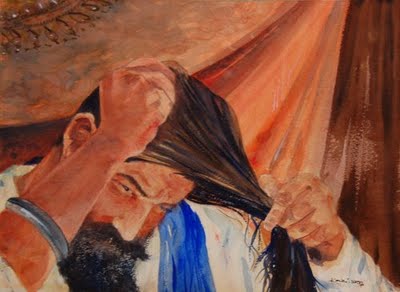 A few weeks ago, while at the park with my family, an elderly woman dressed in a sari came over to say hello. After a brief introduction, she said to us “wait here for a second” and called out “Alex…come here!” A little boy with light skin and brown hair ran over to us. The lady in the sari bent down and said to Alex, “See…this is what your grandfather looked like. He wore a turban and had a long beard just like him.” Alex wasn’t quite sure what to make of it, but he forced a quick smile and ran back to the swings.
A few weeks ago, while at the park with my family, an elderly woman dressed in a sari came over to say hello. After a brief introduction, she said to us “wait here for a second” and called out “Alex…come here!” A little boy with light skin and brown hair ran over to us. The lady in the sari bent down and said to Alex, “See…this is what your grandfather looked like. He wore a turban and had a long beard just like him.” Alex wasn’t quite sure what to make of it, but he forced a quick smile and ran back to the swings.
As a dastaar-wearing Sikh, I come across these interactions quite often – some pleasant, some not-so-pleasant, and some downright awkward. But because they happen so often, I tend to brush it off and forget all about them quickly. For some reason, this incident stuck with me.
It made me think about the days in Gurmat camp decades ago when the Uncles would scare us in to keeping our kesh or else keshdari Sikhs would become a “thing of the past” and “only be seen in museum exhibits.” I never bought that theory, but the incident in the park did shake me a bit.
Although Sikhi is such a large part of my life, truth is…I really don’t think about kesh much. As a matter of fact, when I lead presentations about Sikhi to Sikhs or non-Sikhs, I make a point to downplay the kesh aspect. Not that it is any less important than any of the other kakaars, but with non-Sikhs, the “mystery” behind the kesh seems to overtake discussions, and we miss some of the most important and central tenets of the faith…equality, self-less service, self-realization, and universality of the message. And even with Sikhs, kesh is made such a focus that many in our community feel that as long as we retain the external image of a Sikh, the rest of maryada and discipline does not apply. It is essentially a “free-pass” and gives us the right to criticize those who do not keep their kesh.
Blogged by: Amol Singh
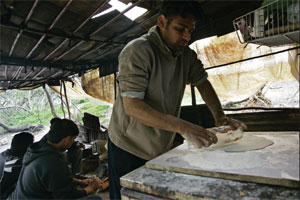 For many of us, the ability to live our lives in the diaspora is a direct consequence of journeys emanating from Punjab. Our fathers and mothers left economic insecurity and political uncertainty and set sail on ships and planes to far off backwaters in hopes of finding routes to the holy grails of North America and Europe. In today’s grapevine, it has become a casual affair to hear of Panamanian border crossings and Cuban raft rides. In a remarkable event, Spanish documentary film makers Alberto Garcia Ortiz and Agatha Maciaszek are currently in the process of filming the harrowing story of 54 Punjabi’s; who stranded in the Spanish city of Ceuta and fearing detention and deportation have fled and taken up refugee in the hills of the city.
For many of us, the ability to live our lives in the diaspora is a direct consequence of journeys emanating from Punjab. Our fathers and mothers left economic insecurity and political uncertainty and set sail on ships and planes to far off backwaters in hopes of finding routes to the holy grails of North America and Europe. In today’s grapevine, it has become a casual affair to hear of Panamanian border crossings and Cuban raft rides. In a remarkable event, Spanish documentary film makers Alberto Garcia Ortiz and Agatha Maciaszek are currently in the process of filming the harrowing story of 54 Punjabi’s; who stranded in the Spanish city of Ceuta and fearing detention and deportation have fled and taken up refugee in the hills of the city.
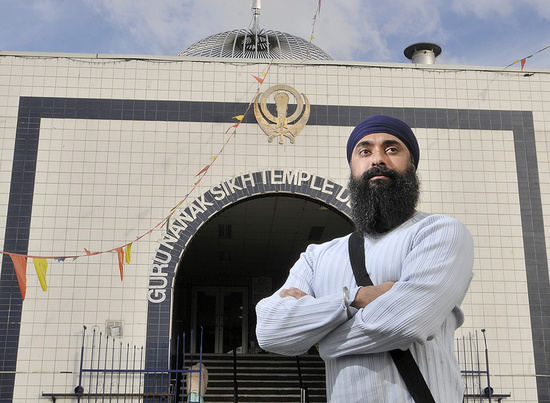 Many of the elements that make up this article have been featured in the Langar Hall in the past – Ranj Dhaliwal’s book Daaku about the lifestyle of Punjabi gangsters, thugs, and drug-dealers in BC during the late 1990s and early 2000s that cost the lives of 100+ youth in our community, Mani Amar’s film “A Warrior’s Religion” that documents the real life stories and effects of the peak of the violence, and finally to the various twists and turns that is British Columbia’s Sikh politics – from new coalitions to disputed certifications.
Many of the elements that make up this article have been featured in the Langar Hall in the past – Ranj Dhaliwal’s book Daaku about the lifestyle of Punjabi gangsters, thugs, and drug-dealers in BC during the late 1990s and early 2000s that cost the lives of 100+ youth in our community, Mani Amar’s film “A Warrior’s Religion” that documents the real life stories and effects of the peak of the violence, and finally to the various twists and turns that is British Columbia’s Sikh politics – from new coalitions to disputed certifications.
However, a recent article in The Walrus, author Timothy Taylor brings all these elements together in his piece, titled “Showdown on Scott Road.”
Blogged by: Amritpan
 For many years UNICEF India has attempted to survey and document the declining sex ratio and female feticide in India. And for many years the government of India has maintained that Punjab (and thus Sikhs) consistently registered the highest number of ‘kuri maar’ cases, as compared to states such as Haryana, Himachal, Rajasthan, and Gujarat. So when a Punjabi doctor took the stage at United Nation’s Geneva Conference and dared to question the validity of the government’s survey methods, she was met with a ruthless legislative backlash so typical of Bharat’s political response to its human rights advocates that it almost doesn’t even prompt a second glance.
For many years UNICEF India has attempted to survey and document the declining sex ratio and female feticide in India. And for many years the government of India has maintained that Punjab (and thus Sikhs) consistently registered the highest number of ‘kuri maar’ cases, as compared to states such as Haryana, Himachal, Rajasthan, and Gujarat. So when a Punjabi doctor took the stage at United Nation’s Geneva Conference and dared to question the validity of the government’s survey methods, she was met with a ruthless legislative backlash so typical of Bharat’s political response to its human rights advocates that it almost doesn’t even prompt a second glance.
A renowned, outspoken crusader of women’s rights and a pediatrician at Rajindra Hospital, Patiala, Dr. Harshinder Kaur presented a paper to the Geneva Convention that explicated upon the abject conditions of women in India, disputed female feticide as being a Punjabi cultural phenomenon by asserting that Rajasthan has the highest number of feticides, and challenged India’s injudicious spending of the UN’s funds, urging that the UN redirect this monetary support to specialized NGOs.
Last week a Punjabi Sikh cab driver suffered a gruesome act of hate in the middle of the night in the Bay Area. He was called “Bin Laden”, a “terrorist”, and someone who had come to this country to kill Americans. His attackers where white males working professional jobs in real-estate. Not your stereotypical attackers, but committing a very typical act of hate. Although, the attackers posted bail with their money; the injured cab driver can not work to provide for his family.
We have laws to protect the attackers, but who is protecting the taxi-cab driver? How is it possible that assaulting a taxi cab driver is not a felony in every American city? Taxi cab drivers have one of the most dangerous jobs because of the environments in which they transport clients and how money for service is exchanged. They never know the character of the person they are picking up or if he/she will have enough money to pay. They function off the assumption that they won’t be attacked and their client will pay them. Otherwise, they could not make a profit in this business. They can’t let their fear overtake them.
At a recent conference, “Driving For The Future”, a taxi cab workers alliance in the Bay Area called United Taxi Cab Workers, announced that they are working towards a bill of rights. The Asian Law Caucus is working closely with this group. The bill of rights would demand, for example, that attackers suffer more severe penalties and there be a safety-net of benefits to help cab drivers who have been assaulted. In an industry employing large number of immigrant men who are not fluent in English; the need to legally protect taxi-cab drivers’ rights is very important. We need to encourage Punjabi Sikh taxi cab drivers to participate in this alliance to make sure their needs are protected.
It might partly be the scarcity of female voices and public female faces in the Sikh community that makes Nikky-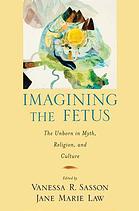 Guninder Kaur Singh’s so distinctive and refreshing. But in addition to her position as one of the few public female voices in the Sikh community, her original and creative work is really what makes Ms. Kaur-Singh so refreshing. As we have discussed in the past, in the context of “Relocating Gender in Sikh History,” the vast majority of Sikh history has been written by men. And thus, despite their best intentions, for the most part, women’s voice in Sikh history has been non-existent. It is silent.
Guninder Kaur Singh’s so distinctive and refreshing. But in addition to her position as one of the few public female voices in the Sikh community, her original and creative work is really what makes Ms. Kaur-Singh so refreshing. As we have discussed in the past, in the context of “Relocating Gender in Sikh History,” the vast majority of Sikh history has been written by men. And thus, despite their best intentions, for the most part, women’s voice in Sikh history has been non-existent. It is silent.
In this realm of mostly male voices, Ms. Kaur-Singh has taken an original position on a much-needed project: to explore a feminist perspective in interpreting Gurbani. Many translations of Gurbani have been written, some of which are quite good, and others that are quite lacking (in terms of staying close to the feeling of the original shabad and being easily understandable for today’s audiences). One of the most popular translations today, if not the most popular, is Sikhi to the Max. It’s heavily used in gurdwaras, at weddings, and by individuals at home. And in this translation, the divine is interpreted as He/Him/Lord. Not only is this archaic, it creates a framework of masculinity that limits our understanding of Waheguru. The Sikh conception of gender embraces as well as goes beyond gender.
In a piece we discovered recently, Ms. Kaur-Singh contrasts current practices of sex-selective abortion with the place of the feminine within Gurbani. In a chapter of “Imagining the Fetus: The Unborn in Myth, Religion, and Culture,” Ms. Kaur Singh orients readers with the history of sex-selection in Punjab. She then goes on to show how Gurbani holds the power to turn today’s practices on their head. In a few short pages, we are treated to a celebration of the feminine, reminded that our spirituality can focus on our source (the physical allegory of which is the mother) rather than its current infatuation with the end, and given a gender-neutral interpretation of excerpts of Gurbani which resonate as closer to a truer meaning than some other more widely used interpretations today.
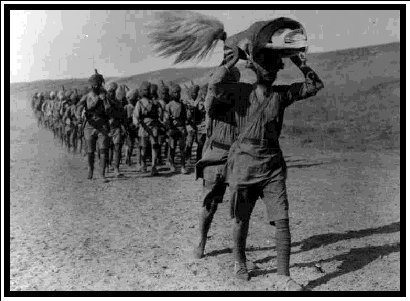 In honor of yesterday’s Gurpurab (Bhadon 17, Nanakshahi) marking the anniversary of the first installation of Guru Granth Sahib Ji Maharaj in the Darbar Sahib, I’d like to share a piece I had written for sikhchic.com at the culmination of last year’s “300 Saal” celebrations, titled “My Guru & I: In His Presence.”
In honor of yesterday’s Gurpurab (Bhadon 17, Nanakshahi) marking the anniversary of the first installation of Guru Granth Sahib Ji Maharaj in the Darbar Sahib, I’d like to share a piece I had written for sikhchic.com at the culmination of last year’s “300 Saal” celebrations, titled “My Guru & I: In His Presence.”
As 2008 comes to an end, I’ve been reflecting on all the “300 Saal” celebrations of the year. It was an inspiring year – and the discussion, speeches and sheer emotion of this milestone really gave me a chance to reflect on the role of the Guru in my life.
While volunteering at Gurmat camps, I always made a point to pose a question to the children, prior to leading them in to their first divan: “If you walked into this Gurdwara and instead of the Guru Granth Sahib being there, say it was Guru Nanak, or Guru Amar Das or Gur Tegh Bahadur, sitting there – how would you act?” How would you carry yourself when walking in? Would your mind-set be any different? Would your muthha tek take on a different meaning? Would you be more attentive and alert during the divan? Would you be more eager to listen to his words and try harder to understand him?
Guru Ram Das says:
Baani Guru Guru Hai Baani Vich Baani Amrit Saarey
Bani is the Guru and Guru is the Bani. And it’s within this Bani, that Amrit is found.
Thus, the Shabad (“The Word”) is, was and always will be the Guru. History tells us that even during Guru Arjan’s time, the Granth (then referred to as the Pothi Sahib because it was yet to be completed and anointed Guru), was the center of the congregation, the center of the Darbar, even in the presence of Guru Arjan himself.
The saakhis tell us that Guru Arjan had so much reverence for the Pothi Sahib that he kept it on an pedestal elevated even from himself, and joined the Sikhs in paying obeisance to it. This tells me that it is not the person, the attire or the physical attributes that make the Guru; instead, it is the Shabad. But we call the ten physical forms (from Nanak to Gobind Singh) Guru because they were the living manifestation of that Shabad.
They lived the Shabad. We sing it, they lived it.
In the Faridkot centre… Harmanbir Kaur, 15, was rocking gently backwards and forwards. When her test results came back, they showed she had 10 times the safe limit of uranium in her body. Her brother, Naunihal Singh, six, has double the safe level. [link]
An article in The Observer discusses the link between the dramatic rise in birth defects in Punjab and pollution from coal-fired power stations. Many of the children are being treated in Faridkot and at the Baba Farid centers for special children in Bathinda, where there are two coal-fired thermal plants. Staff at these clinics had noticed an increase in the incidence of severely handicapped children who were born with hydroencephaly, microencephaly, cerebral palsy, Down’s syndrome and other complications. They suspected environmental poisoning.
The healthcare workers rightfully voiced their concerns about this and wondered, if some children were being treated, how many more were being affected? As with governments’ other dirty little secrets, staff at the clinics were visited and threatened if they spoke out. In addition, a visiting South African toxicologist arranged for tests to be carried out and found that the children had massive levels of uranium in their bodies, in one case more than 60 times the maximum safe limit. The scientist was later warned by the authorities that she may not be allowed back into the country.
 As all UK Sikhs or travelers to UK know at busy entries to the London Underground, you’ll find various vendors handing out free tabloids. Although everyone groans at the content, still enter the tube and you’ll find most busy Londoners flipping past the latest gossip on Paris Hilton or the recent election coverage in Afghanistan.
As all UK Sikhs or travelers to UK know at busy entries to the London Underground, you’ll find various vendors handing out free tabloids. Although everyone groans at the content, still enter the tube and you’ll find most busy Londoners flipping past the latest gossip on Paris Hilton or the recent election coverage in Afghanistan.
On Friday morning, many Londoners got a bright, colorful picture [click below the fold]. Although the content was nothing groundbreaking, still many of our Sikh readers (pagh salute: Joo Kay Singh) were pleased with the picture.
I found this video of the Miss World Punjaban 2008 contest interesting because the contestant chose to highlight her Sikh identity that is intimately linked to Punjabi culture. I find that it is easy for us to “intellectually” talk about the separation of the two identities. However, for many, being Sikh and Punjabi are intimately connected. They mutually exist-one does not envision oneself without the other.
Ms. Gurpreet Kaur Khaira from Canada chose to highlight this co-existence of the two identities in the talent portion of the contest. She performs dhadi vaar, while wearing a simple white suit and kessari chunni.
Who is Miss Punjaban and what does she look like varies … there is not only one notion of Punjabi “beauty” or identity … at least in this beauty contest! You can sing dhadhi vaar in simplicity or a Punjabi song in a bright red chunni and kokaa.
(FAST-FORWARD TO 1:44 to see Ms. Gurpreet Kaur Khaira from Canada)

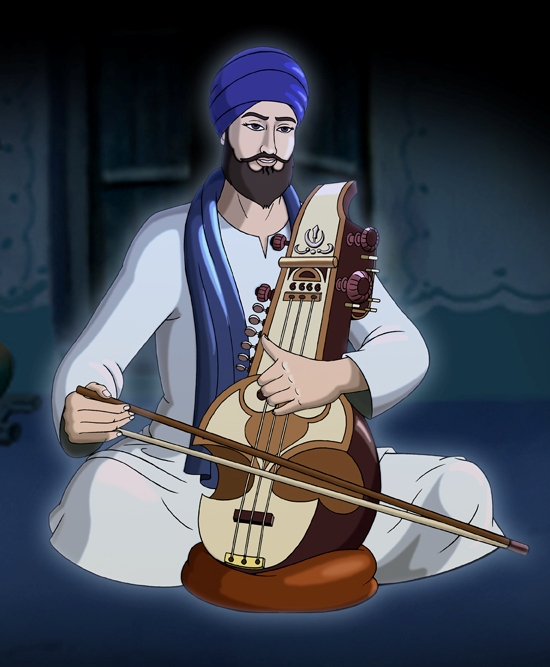 For those of you who enjoyed Vismaad Productions’ work with Sahibzadey, Rise of the Khalsa and Sundri, there is now a new animated movie to look forward to this fall. Bhai Taru Singh: True Saint. Fearless Soldier, is the latest production and will be premiering around the world over the next few months. The film’s website provides a description of the film,
For those of you who enjoyed Vismaad Productions’ work with Sahibzadey, Rise of the Khalsa and Sundri, there is now a new animated movie to look forward to this fall. Bhai Taru Singh: True Saint. Fearless Soldier, is the latest production and will be premiering around the world over the next few months. The film’s website provides a description of the film,
The story of Bhai Taru Singh is one of a true saint soldier who lived during an extremely difficult period for the Sikhs. The mughal rulers of the time were brutal towards all citizens, and especially the Sikhs. Bhai Taru Singh Ji bravely stood up to the regime which earned him the respect of all Hindus and Muslims from the surrounding villages. [link]
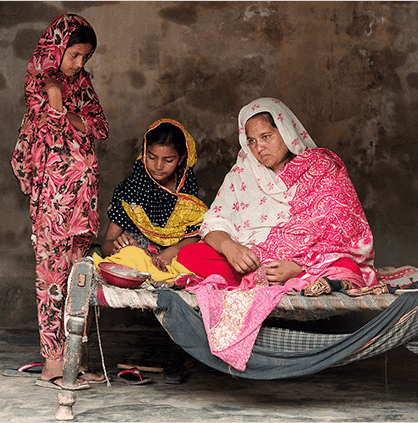 The issue of forced marriages and domestic violence clearly struck a chord with many of the TLH readers. But somewhere deep in the comments over titles, or whether these are Sikh or Punjabi issues, or whether or not we should air our “dirty laundry” in the first place – I feel some of the issues themselves got lost. In formulating my own thoughts on the topic and trying to build a broader perspective on women’s issues in general, I came across a fascinating article in last week’s New York Times Magazine called “Saving the World’s Women.” The premise of the article is that many of the countries that are disproportionately poverty-stricken and absorbed in fundamentalism and chaos, are also those same countries where women are the least educated and most marginalized. And by focusing (and investing) on women and girls, a dramatic impact can be made to fight global poverty and extremism.
The issue of forced marriages and domestic violence clearly struck a chord with many of the TLH readers. But somewhere deep in the comments over titles, or whether these are Sikh or Punjabi issues, or whether or not we should air our “dirty laundry” in the first place – I feel some of the issues themselves got lost. In formulating my own thoughts on the topic and trying to build a broader perspective on women’s issues in general, I came across a fascinating article in last week’s New York Times Magazine called “Saving the World’s Women.” The premise of the article is that many of the countries that are disproportionately poverty-stricken and absorbed in fundamentalism and chaos, are also those same countries where women are the least educated and most marginalized. And by focusing (and investing) on women and girls, a dramatic impact can be made to fight global poverty and extremism.
Take the example of Saima Muhammad (pictured above) from Pakistan. Saima didn’t have a rupee to her name, was routinely beaten by her unemployed husband and other family members, and had to send her kids away due to lack of food and other basics. Even her mother-in-law contributed to her troubles by encouraging her son to marry again because Saima was only giving birth to girls. However, after Saima signed up with the Kashf Foundation, a Pakistani microfinance organization, things turned around.
Saima took out a $65 loan and used the money to buy beads and cloth, which she transformed into beautiful embroidery that she then sold to merchants in the markets of Lahore. She used the profit to buy more beads and cloth, and soon she had an embroidery business and was earning a solid income — the only one in her household to do so. Saima took her elder daughter back from the aunt and began paying off her husband’s debt.
…Saima became the tycoon of the neighborhood, and she was able to pay off her husband’s entire debt, keep her daughters in school, renovate the house, connect running water and buy a television.
As the economics of Saima’s situation changed, so did the relationship with her family. She now has a better relationship with her family and has earned their respect. It is unfortunate that this is what it took for Saima, and many will never have the golden opportunity Saima had, but it does send a clear message – that although it may seem impossible to break down cultural barriers, economics can change the game quickly.
While randomly browsing on the web, I came across this interesting anecdote by a Christian of Amritsar.
East coasters and others with expendable income: the Sikh Art & Film Foundation is bringing you the 2009 International Film Festival to be held at the Asia Society and Museum.
The Festival will kick off on Friday September 18th with 3 films (My Mother India, Flying Sikhs – A History of Sikh Fighter Pilots, and Nineteen Eighty-Four and the Via Dolorosa Project). The night ends with a party at Asia Society’s Garden Court. The Festival continues on Saturday with 4 documentaries (A Warrior’s Religion
Not Every Time…, Turbanology, Who Do You Think You Are – Meera Syal) and 6 short films (Battle of Chillianwala – The Waterloo of India, Bhangra Generation, Prisoner’s Song, Street Smarts, turBAN, and
Unravelling). Saturday concludes with the Heritage Gala After Party at Leela Lounge. Mira Nair will be honored and $15,000 in cash will be awarded to filmmakers.
A pass to all above events is only $45. Buy your tickets before they sell out!
 The issue of the loss of Sikh heritage sites and documents has long been lamented by many Sikhs. In fact, one of my fellow langa(w)riters blogged about the need to ‘preserve what history we have left.’ One group has been silently seeking to remedy this problem – the Nanakshahi Trust.
The issue of the loss of Sikh heritage sites and documents has long been lamented by many Sikhs. In fact, one of my fellow langa(w)riters blogged about the need to ‘preserve what history we have left.’ One group has been silently seeking to remedy this problem – the Nanakshahi Trust.
Quietly working on a massive project for over the past 6 years, the Nanakshahi Trust, along with the Sikh Research Institute, have inaugurated the Panjabi Digital Library:
For the first time ever a searchable collection of millions of rare pages on the Sikhs and the region of Panjab has been made available. Panjab Digital Library (PDL) will include texts of manuscripts, books, magazines, newspapers and photographs and will be available to anyone with Internet access at www.PanjabDigiLib.org. This launch was made possible in part by The Nanakshahi Trust and the Sikh Research Institute (SikhRI).
In today’s society, digitization is the key to immortality. While Sikhs have to be equally wary of those that claim Sikhs have no history as well as those that come up with their own ludicrous interpretations, a project such as the Panjab Digital Library allows Sikhs to access their own primary and secondary sources. Nanakshahi Trust has done a tremendous boon to Sikhs, researchers, and all that are interested in the preservation of history and man (and woman’s) historical past.
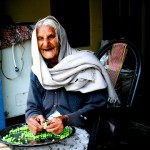 Often times the elderly are considered “high-cost” because they take money out of American system. They are seen as a “liability” because they withdraw medicare and social security benefits. Foriegn elders are similarly viewed as a group that “takes” through government benefits, but is not expected to serve the American system for very long.
Often times the elderly are considered “high-cost” because they take money out of American system. They are seen as a “liability” because they withdraw medicare and social security benefits. Foriegn elders are similarly viewed as a group that “takes” through government benefits, but is not expected to serve the American system for very long.
However, in a recent study at the Center for Intergenerational Learning at Temple University, scholars found that “older immigrants are not inert drains in the U.S. system but an invisible force of community contributors in the United States”.
The study found that immigrant elders contribute to community cohesion by playing leadership roles in families. Also, their sense of interconnectness, rooted in religious and cultural values, forces them to look out for the collective good. They are also a good source for motivating the younger generation to support community members.
It used to be the case that women who came to the US as dependents on their husbands’ immigration status were 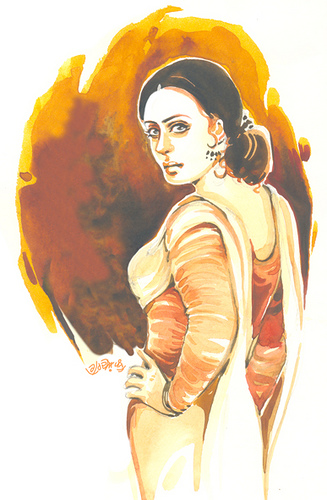 sometimes caught between a rock and a hard place. In cases where one spouse was abusive, the other spouse wouldn’t leave the relationship for fear of losing their immigration status and being sent back to their original country. If they returned to their original country empty handed and without their spouses, they would be perceived as failures. And so, many women have just endured extremely abusive relationships.
sometimes caught between a rock and a hard place. In cases where one spouse was abusive, the other spouse wouldn’t leave the relationship for fear of losing their immigration status and being sent back to their original country. If they returned to their original country empty handed and without their spouses, they would be perceived as failures. And so, many women have just endured extremely abusive relationships.
One option that has been available if the abuser is a permanent resident or a US citizen is a self-petition under the Violence Against Women Act. But this wasn’t available if the abuser was in the US on a temporary visa, as many immigrants initially are, or to women outside the US.
Thus, a recent development in asylum law has the potential to open a door to safety for at least some women who are most seriously abused in domestic violence. To qualify for asylum (or refugee status), one must have been a victim of persecution, or have a well founded fear of persecution based on their race, nationality, religion, political opinion, or “membership in a particular social group.” Before this summer, women who were victims of horrendous domestic violence were not recognized as a particular social group, though the issue has been argued for 14 years in a battle to allow battered women to seek asylum in the US. [link]
The government’s prior position under the Bush administration was illustrated in the case of R-A-, a woman who suffered horrific violence at the hands of her husband, a former soldier of the Guatemalan army. She was kicked, whipped, and beaten unconscious, nearly had an eye pushed out, was repeatedly raped, sodomized, threatened with machetes and guns, dragged by her hair, and had windows and mirrors broken on her head. [source 1, 2]. The Guatemalan police refused to help each time she went to them, deciding that hers was a domestic matter. RA fled Guatemala and her husband, seeking asylum in the US.
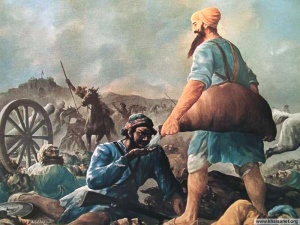 I’ve always enjoyed a good story…and amongst all the depressing news lately of our declining economy, raucous town hall meetings, and corrupt politicians…I often turn to StoryCorp’s podcasts for a quick “pick-me-up”. A few months back, I came across a beautiful piece titled “Finding El Dorado.” It’s the story of Gus Hernandez and the unique friendship he developed with Siddiqi Hansoti as a result of the current economic crisis. I was moved by this simple story of compassion and the power of the human spirit. Take a listen…it’s only 3 minutes [link].
I’ve always enjoyed a good story…and amongst all the depressing news lately of our declining economy, raucous town hall meetings, and corrupt politicians…I often turn to StoryCorp’s podcasts for a quick “pick-me-up”. A few months back, I came across a beautiful piece titled “Finding El Dorado.” It’s the story of Gus Hernandez and the unique friendship he developed with Siddiqi Hansoti as a result of the current economic crisis. I was moved by this simple story of compassion and the power of the human spirit. Take a listen…it’s only 3 minutes [link].
This story got me thinking about compassion and what it means to a Sikh. After some brief research, I found dozens of references to Daya (and its variations – Dayal, Dayala etc.) in the Sri Guru Granth Sahib Ji. Depending on the context, it is loosely translated as compassion, mercy or pity. Several times it is used as an attribute of Waheguru:
miharavaan kirapaal dhaeiaalaa sagalae thripath aghaaeae jeeo |3|
He is Merciful, Kind and Compassionate. All are satisfied and fulfilled through Him. ||3||
Other times it is used in the context of an Ardaas:
jath sath chaaval dhaeiaa kanak kar praapath paathee dhaan |
Please bless me with the rice of truth and self-restraint, the wheat of compassion, and the leaf of meditation.
But what I connected with the most was how compassion was described as a necessary attribute of the GurSikh:
dhaeiaa kapaah santhokh sooth jath gantee sath vatt |
Make compassion the cotton, contentment the thread, modesty the knot and truth the twist.
eaehu janaeoo jeea kaa hee th paaddae ghath |
This is the sacred thread of the soul; if you have it, then go ahead and put it on me.
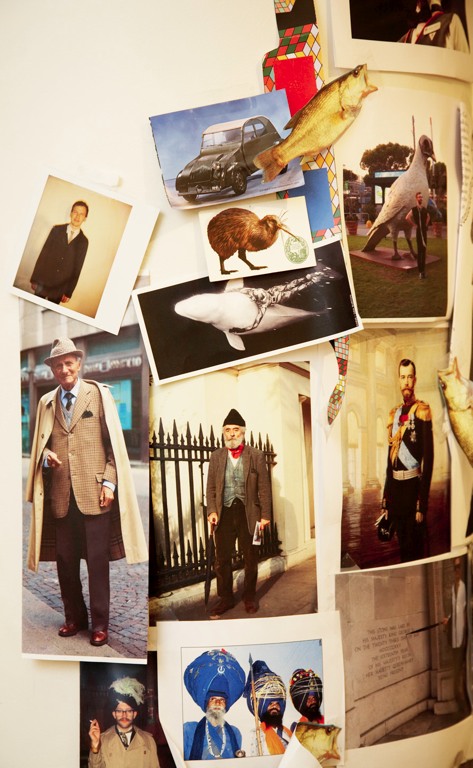 We live in a global world and there are images around us that constantly stimulate us. Once in a while we’ll see images that also inspire us – whether it be musically or artistically. For Lucas Ossendrijver, Dutch-borh Lanvin’s men’s wear designer, a familiar image appears on his inspiration board. [See bottom of picture].
We live in a global world and there are images around us that constantly stimulate us. Once in a while we’ll see images that also inspire us – whether it be musically or artistically. For Lucas Ossendrijver, Dutch-borh Lanvin’s men’s wear designer, a familiar image appears on his inspiration board. [See bottom of picture].
Nihangs have often been an inspiration for many photographers, and it’s clear why they are also an inspiration for designers. A recent article from Punjab Heritage News titled, “Mesmerised with the world of Nihangs” speaks to this,
Today, some people see Nihangs as a relic, but others recognise them as a colourful and important part of the Punjabi heritage. Gurbir Singh Brar, a photo artist also feels that there is no colourful subject as compared to Nihangs.
Nick Fleming, a UK-based photographer also spent time with Nihangs and has a photo exhibit titled, “Nihang Singhs of Punjab.” I have included a few of his stricking images after the jump.
While there is much to worry about in the world (and plenty of blog space devoted to that), from time to time it’s valuable to enjoy those things that inspire us and of course, it’s always important to appreciate art!
